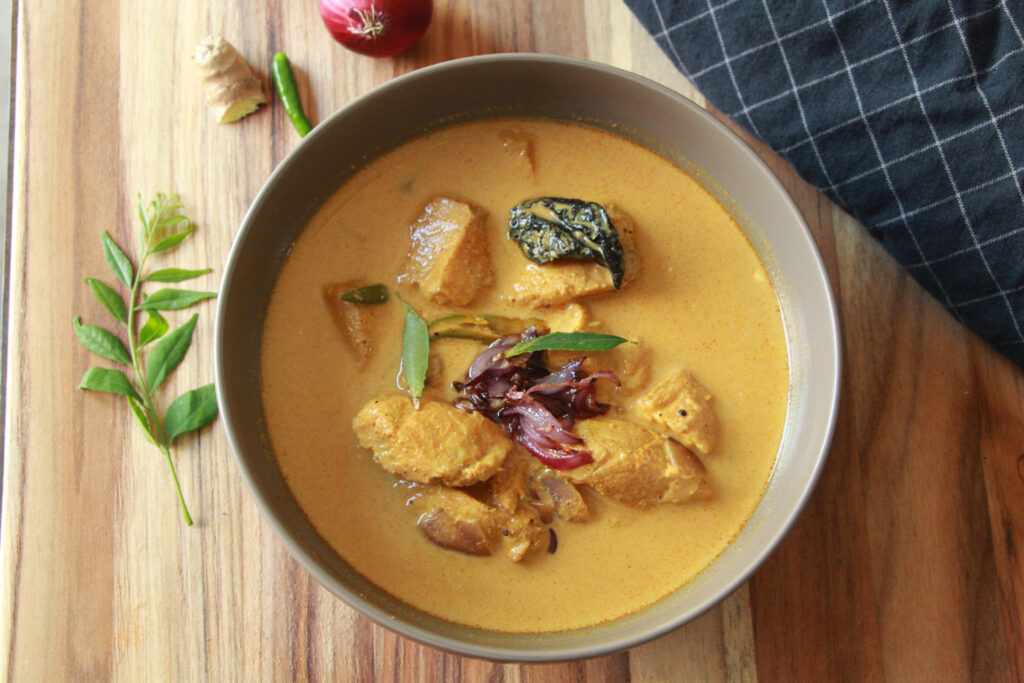
Fish curry and rice has always been a quintessential part of the Kerala cuisine. Of the many varieties of fish curries popular in Kerala, I am making my mom’s Thrissur-style meen (fish) curry: a recipe from the central part of Kerala.
A little history
Kerala, at the south-western corner of India has the Arabian sea on one side and the Western Ghats on the other side. It is a small state but has over 40 rivers flowing through it. So fish, both fresh water and saltwater fish, is abundant and is a major part of the cuisine in Kerala.
On the days that my mom plans to make this fish curry, we all will be listening for the calls of the fish monger on the street. If we hear him, we have to call him over. Our fish monger was a lean old man and I would always be worried that the load he was carrying was too much for him. He would come with two baskets full of fish balanced on his shoulder on a carrying pole. The baskets would be covered with a white tarp, and his trusted weighing scale and weights would secure the tarp over the fish. My mom trusted him to bring only freshest fish and so we used buy fish only from him. They might haggle over the price and once the price and weight was agreed upon, he would take out his scale and weights to weigh out the fish. And then he is off again with his baskets of fish.
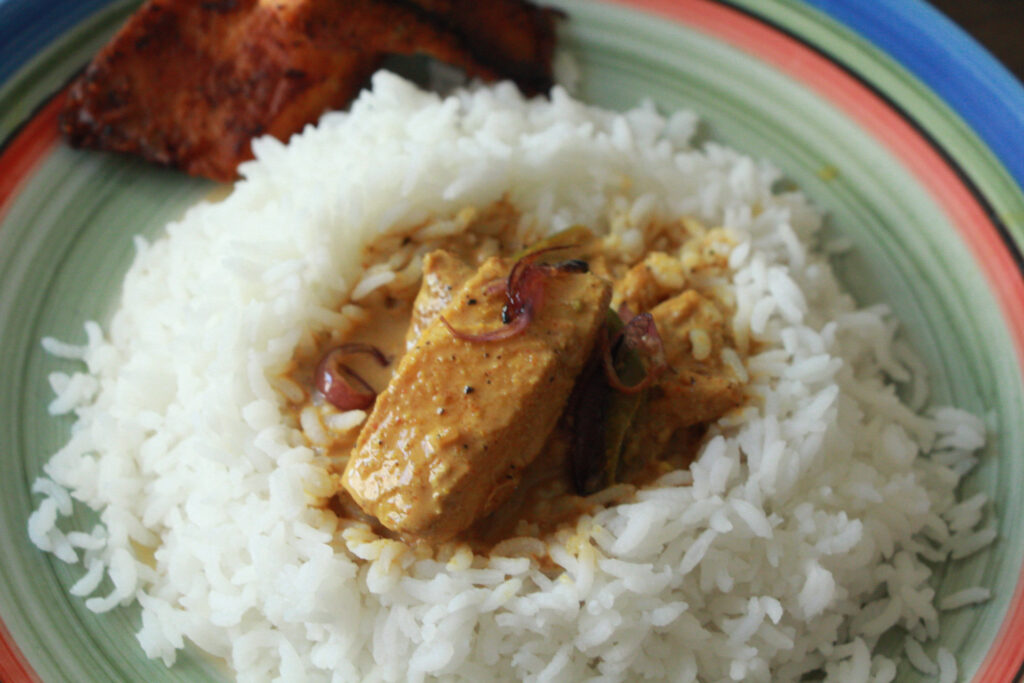
Kerala fish curry or Thrissur-style fish curry is an easy curry that my mom makes at home. It tastes amazing with the flavors of ginger and green chillies along with the unique tartness from kudampuli and richness from coconut milk. You can substitute kudampuli with an unripe mango and still get a very tasty curry.
Kudampuli
Garcinia gummi-gutta or kudampuli or Malabar tamarind is a dried fruit that imparts a special tartness to the curry, an almost smoky flavor. It was formerly known as Garcinia cambogia. It is primarily used for making fish curries in Kerala. You can buy it at Indian stores.
Sometimes kudampuli is mistakenly called kokum. Kokum, used in Maharastrian and Goan cuisines, is Garcinia indica and is not the same as kudampuli.
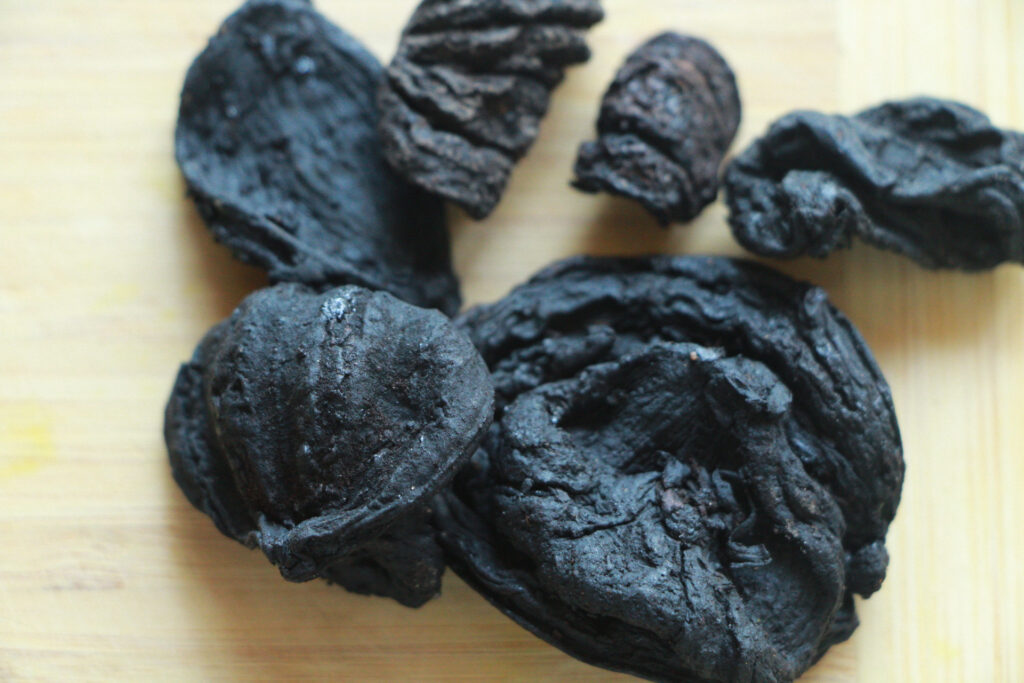
For the fish curry, wash and dice the fish into cubes. In a mortar and pestle, crush ginger, green chillies and a couple of pearl onions into a coarse paste. Wash a couple of pieces of Garcinia and keep aside.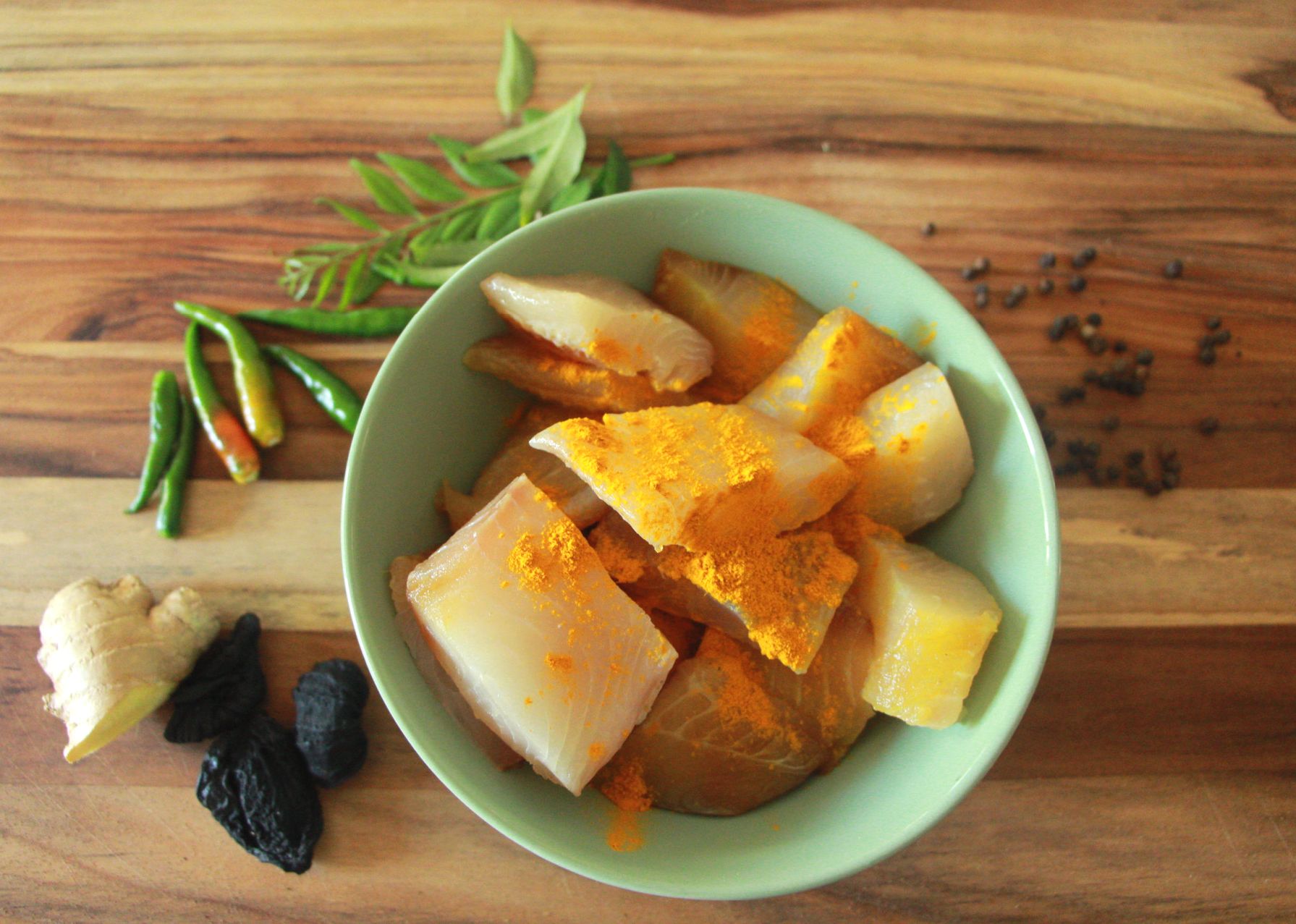
In a wide-mouthed pan, mix the fish, turmeric powder, chili powder, pepper powder, coriander powder, the ginger-greenchilli-pearl onion mixture, curry leaves, coconut oil and salt.
Rub everything well into the fish using your fingers and keep aside for 10 minutes. 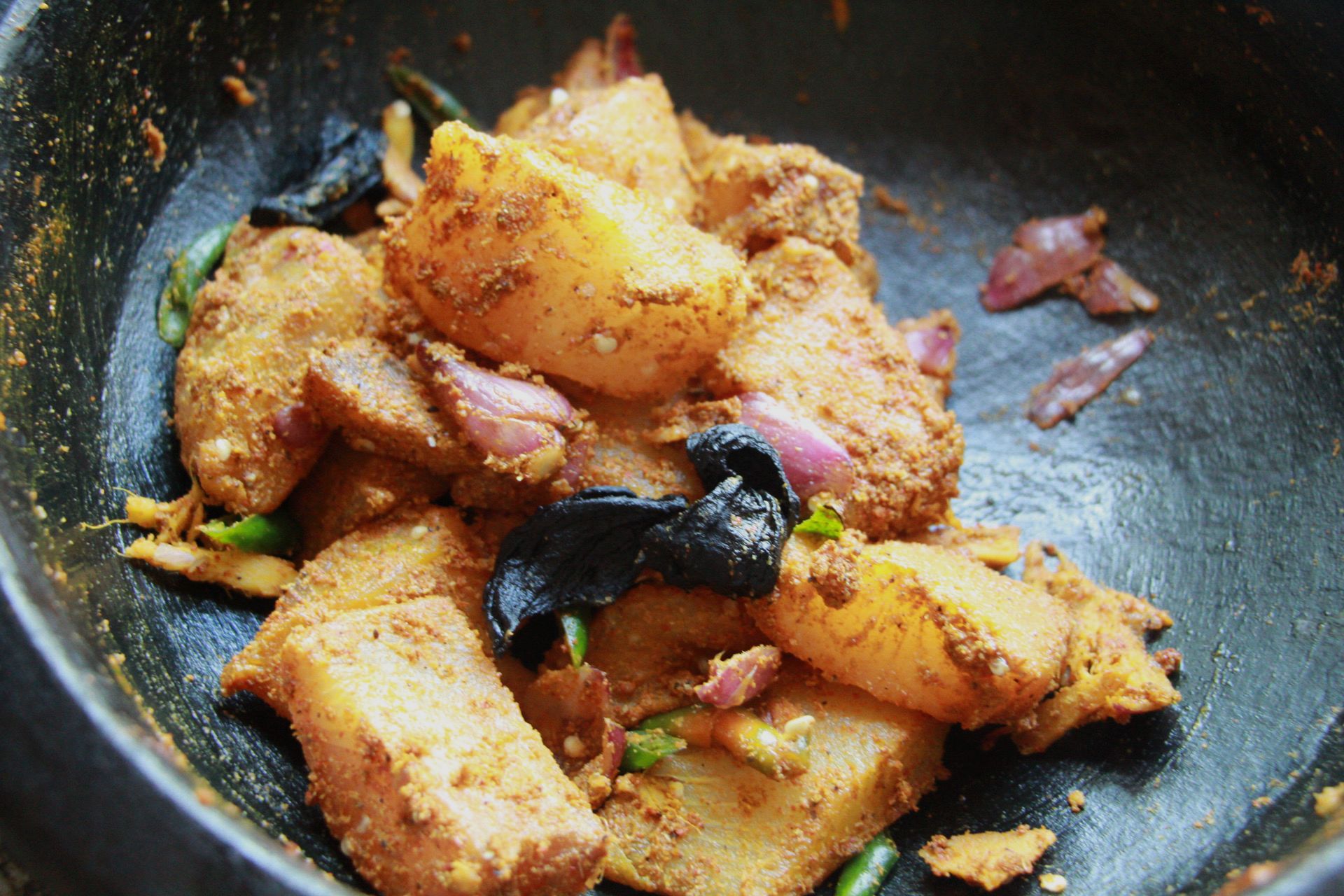
Add 1-2 cups of water, just enough to cover the fish pieces.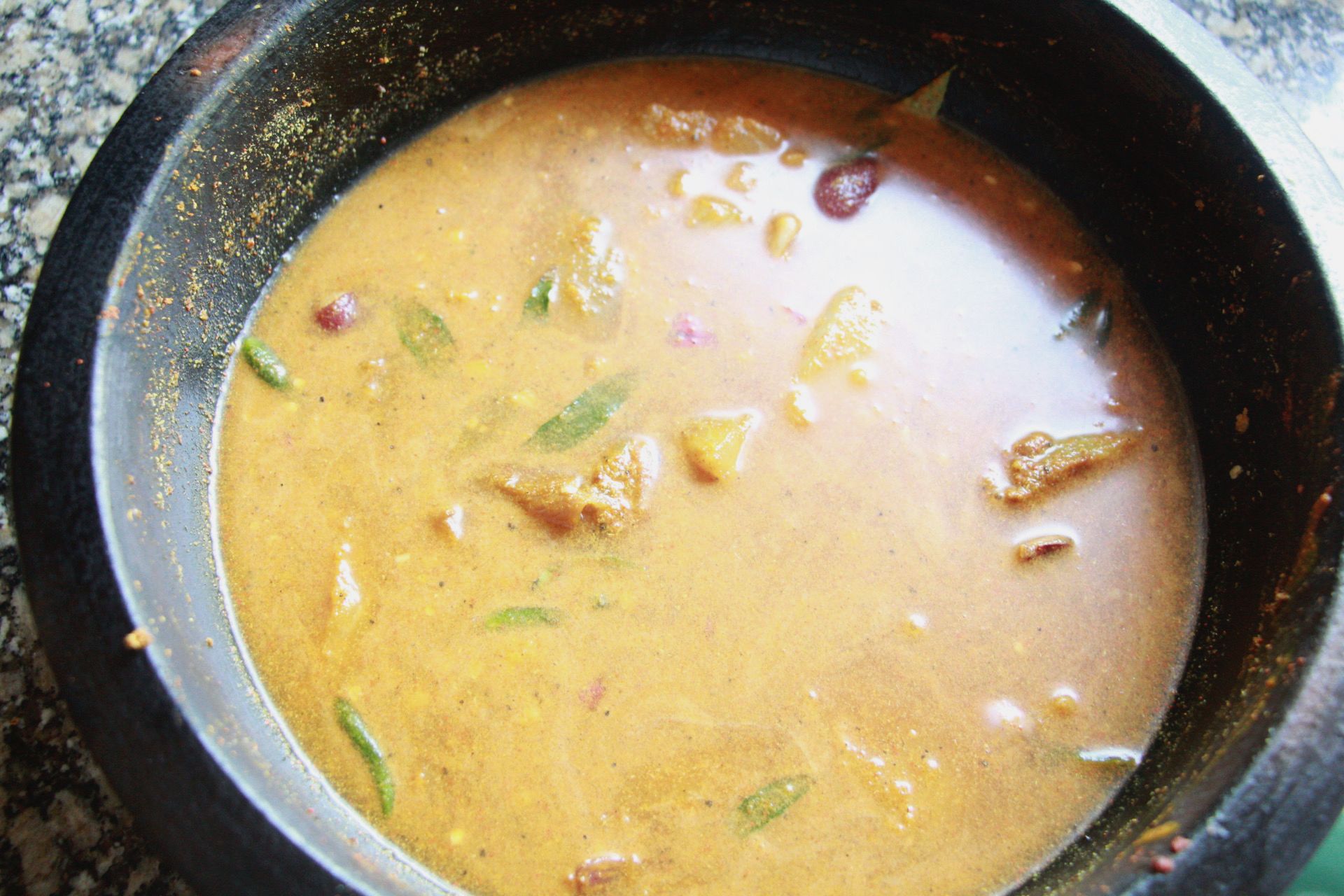
Cover and cook on a medium-low flame till the fish is cooked and the water has reduced to at least half. Once the fish has cooked, take care not to break the fish pieces when mixing. You can swirl the whole pot around instead of using a spoon to mix the curry.
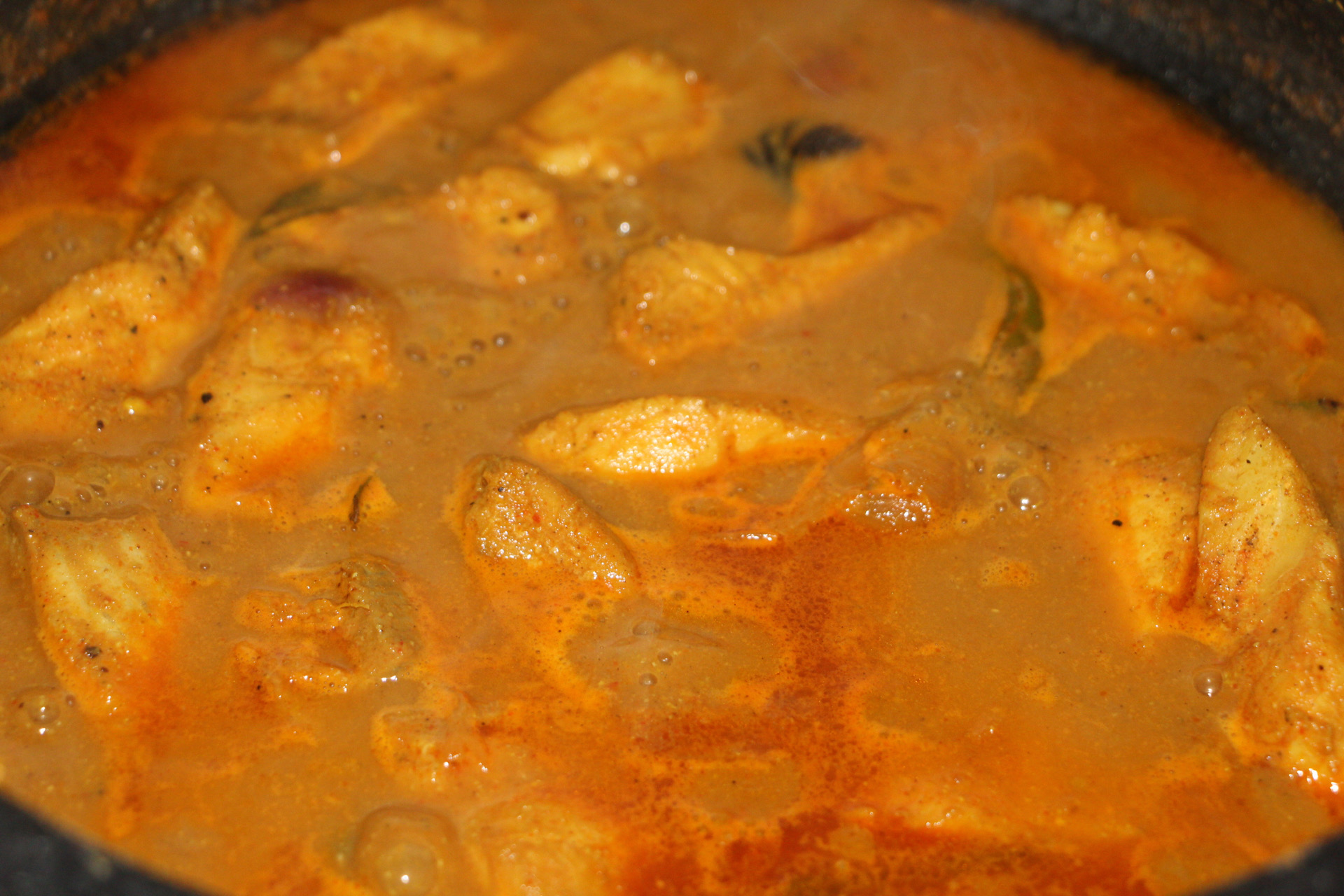
Once the curry is done cooking, switch off. In a small pan, saute pearl onions in coconut oil and pour over the curry. If you feel the curry is not spicy enough, you can also saute a couple of green chillies along with the pearl onions and add to the curry. Or else, add a teaspoon of red chili powder after switching off the pan and mix well in the oil. Let it heat up in the residual heat and then pour over the curry.
Allow the curry to rest for at least 15 minutes before serving. It tastes even better the next day. Make sure you store any leftovers in the fridge.

Kerala fish curry
Ingredients
- Around 16 pieces Fish, cut into pieces (I used Tilapia)
- 1" Ginger
- 8 Green chillies
- 4 Pearl onion,
- 3 pieces Kudampuli
- 1 tsp Turmeric powder
- 1 tbsp Chili powder
- 2-3 tsp Pepper powder
- 2 tbsp Coriander powder
- 1-1½ tbsp Coconut oil
- 1 cup Coconut milk
- A few curry leaves
- To taste Salt
Instructions
- Clean and cut the fish into medium sized pieces of the same size.
- Coarsely crush the ginger, green chillies and 2 pearl onions.
- Wash the kudampuli well to remove any grit. Tear into half and keep aside.
- In a large bowl, add the fish, crushed ginger-greenchilli-pearlonion mixture, turmeric powder, chili powder, coriander powder, pepper powder, salt, a few curry leaves, and half of the coconut oil and massage everything into the fish using your fingers.
- Add the kudampuli and keep aside for 5-10 minutes.
- In wide-mouthed pan, add the fish and the marinade along with enough water to cover the fish pieces. Do spread out the pieces around the pan. Please do not add too much water.
- Cover and start cooking on a medium-low flame.
- Once the fish has cooked, remove the cover and let the water reduce and let the curry thicken a little.
- At the end, add the coconut milk. If using fresh coconut milk, you only need the first extraction ( onnaam paal)
- Do not let it boil after adding the thick coconut milk. Let it warm up and then switch off.
- Check the salt. If the curry has become sour enough, do discard the kudampuli.
- In a small pan, heat the remaining coconut oil.
- Thinly slice the 2 remaining pearl onion and add to the oil.
- Let it start changing color into light brown and switch off.
- Add the remaining curry leaves and pour everything over the curry.
Notes
- Allow the curry to rest before serving. The flavor deepens as time goes by, so leftovers will taste amazing the next day.
- Try not use a spoon for mixing the curry, especially after the fish has cooked. It can break the pieces. Instead, hold the sides of the pan using potholders and swirl the curry around in the pan itself.
- I have used canned coconut milk. If using fresh coconut milk, do not let it boil after adding to the curry. The milk could separate.
- If you feel that the curry is not spicy enough, add either slit green chillies or red chili powder while sautéing the pearl onions. You can sauté the green chillies along with the pearl onions. If using red chili powder, wait till the pearl onions have changed color. Switch off and add the red chili powder to the oil. Mix well and pour over the curry.
- If you feel the curry has become sour enough, discard the kudampuli. If you let the kudampuli remain in the curry, the tartness/ sourness could increase over time.

